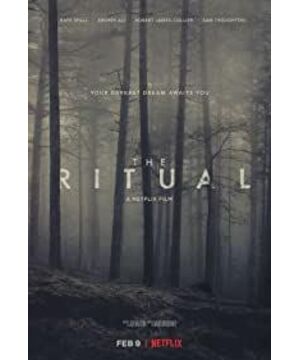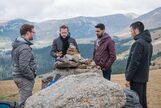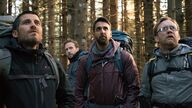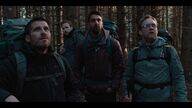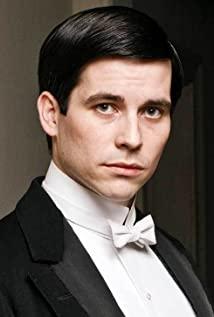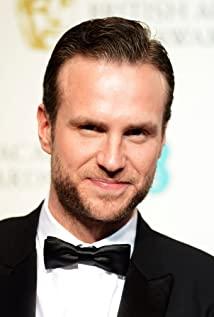Scene 1: Convenience store
characters who are robbed at the beginning of the movie : coward, good guy, two Robbers, shop assistants
Analysis: In fact, as far as the robbery itself is concerned, the situation encountered by cowards and good people is not too bad. After all, the robbers do not have guns in their hands, only machetes (the last murder weapon is also a machete), and at first they did not It was not discovered by the robbers. It was not until the injured clerk was discovered that the convenience store was being robbed. From when they found the injured clerk to when the robbers found them, several waves of people had a short-lived and instinctive subconscious reaction of "stuck there on the spot." In fact, cowards and good people have a chance to escape if they are more flexible in their minds and run away. It’s a pity that the coward took a few more steps deep in the shelf before that (also a few steps that are quite fatal for a good person), which resulted in his position being relatively safe after the robber appeared, while the good person was directly exposed unobstructed. Under the eyes of the robbers, his position at the time was far more dangerous than that of the coward. It can be said that it is precisely because the coward and the good person are in different positions of risk, which causes the inconsistent pace of action between them. During the confrontation between the good guy and the coward, I looked at the place where the coward was hiding several times. The meaning was very obvious: Come and help me, buddy. It's a pity that the coward chose to "just take a corner", holding the bottle in his hand several times to try to rush out and then give up. If he stood side by side with a good person at that time, there was no such possibility of shrinking back. Let me talk about the strategy of confrontation between good guys and robbers. At the beginning, he actually did the right thing. The robbers gave him whatever he wanted, a wallet, and a watch. But on the issue of the ring, he was very mishandled. In the face of robbers, angering the opponent is the most unwise move. And he did just that. Please remember that no matter how important the things the robber wants you to give him (such as the ring) are to you, please don’t begrudge it. It has nothing to do with feelings, beliefs, and honors. In the face of life safety, Those mentioned earlier are insignificant. The ring certainly represents your commitment to your lover, but please believe me, your lover (if he/she really loves you) will never want to see you in order to maintain that love token (it is often very cheap) Items) and pay the price of life! All readers who have seen my film review, please remember this! ! !
Scene 2: The first time the man in glasses was injured in the wilderness
: the man in glasses, the coward, the Indian, the captain
Analysis: I haven't figured out how the man with glasses got injured. It seems that he just got his foot and then put on a posture of "I'm going to die and I won't be able to go." Seeing here, I really want to kick him up, and I am most afraid of encountering this kind of counseling when I go out. The previous shot overlooked the scenery below the mountain and could see the hotel where they were staying from a distance. The captain said: I thought we had already gone very far. That means we are not far from the hotel. This sentence is very wrong. The "U.S. Army Wilderness Survival Manual" mentioned: "People tend to underestimate the distance when the visibility is good. The estimated distance is usually only one-third of the actual distance. That is, the actual distance of 3 kilometers seems to be only in the eyes of humans. 1 kilometer.” Besides, in the wilderness, the route is winding rather than straight, and the visual distance is even more unreliable. Choosing to take a shortcut from the forest is a bad idea. According to the situation at the time, it is completely unnecessary (the spectacle man was not fatally injured, he was bleeding heavily, was bitten by a poisonous snake, etc.). The two suggestions made by the coward are actually feasible. Either make a stretcher and take turns carrying the man with glasses; or leave some supplies and tents for the man with glasses, and the rest will continue to walk back to the hotel for rescue. It is a pity that the captain is particularly confident in his ability to survive in the wild, and has to go into the forest. The director tells us through this scene: blind self-confidence is sometimes more harmful than insignificant timidity.
Scene 3: The cabin where everyone shelters from the rain
Characters: glasses man, coward, Indian, captain, monster
Analysis: I don't know why they didn't set up a camp before the sun had set (this is especially important in bad weather), but went to find a place to stay overnight until dark. That wooden house doesn't seem to be a good place. Instead, I will definitely clean up all the strange symbols and scarecrows in the house, especially the scarecrow, which is too oppressive to people's hearts. The best use should be to use it as fuel. Before going to bed, I have to find a way to block the stairs leading to the second floor. After all, I don’t want to sleep until midnight. Some messy things run down the stairs. Even though I checked that there is no living thing on the second floor, I was in the dark night. There will still be such concerns. Then there is a very important part of this scene, that is, the monster shows its superpower for the first time-it can virtualize the scene that a person is most afraid of/manipulate the person's fear and then control the person's behavior. But the director’s handling here is open to question. When the coward opened the door and saw the scene in the convenience store where the good guy was killed, I thought that the monster’s ability was to turn back time and give the coward a choice to be a hero. Opportunity...
Scene Four: Small Cult Village
Characters: Man with glasses, coward, old witch, English woman, a bunch of corpses, some miscellaneous soldiers, monsters
Analysis: It seems that many netizens are speculating about the origin of the pile of corpses on the second floor of the house where the glasses man was imprisoned. Let me talk about my point of view: these are the people who "can live forever" as English women say. In other words, all those who stay in the small cult village and are not sacrificed as sacrifices will eventually become that kind of corpses. You can refer to the story of Eos and Titonos in ancient Greek mythology (please refer to Baidu for details, and I won’t repeat them here). Anyway, a word: promise to let you live forever does not mean promise to let you stay young forever. Let’s talk about the monster. Many netizens think that letting the monster reveal its true identity makes the movie very boring. I personally don’t agree with this view. This movie is still very successful in shaping the image of the monster. The treatment of the lower body of the sphinx lion + the upper body of the beautiful woman in "and the Sphinx" is weird and decent, very artistic. In particular, the spectacle man saw the illusion of his wife before he was executed. First, it was a normal female image. Then he told the audience that it was an illusion through double pupils. Then the lens turned into a monster image, and the whole process was smooth. In the end, the coward ran away. It might be because of seeing through life and death and getting a rifle. It was a lot harder than the previous performance. The punch in the face of the old witch was really cool! After the rifle was found to be jammed, the process of withdrawing, reloading, and firing at miscellaneous soldiers was also very calm. Finally, seeing the monster torturing the spectacle man, he took a shot from a distance. Although it didn't have any real effect, it brought out the change of the coward's mental state, and he turned from being timid to being fat. As for some netizens discussing why they should yell at the monsters in the forest at the end of the film, I don't think there is any need to go into it. Maybe it's just a kind of emotional vent after escaping from the danger zone.
Generally speaking, the filming is not bad, you can watch it to pass the time when you have nothing to do. By the way, the natural scenery in Sweden is really beautiful, and I would like to enjoy it when I have the opportunity.
View more about The Ritual reviews


